|






Click the flag
Meet our special
U.S. Publishers
|
Brain
Injury, Illness and Changes
Featured
Books in this Category / Main
Booklist

Featured
Books
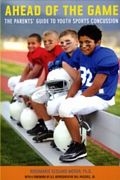
|
Ahead of the Game: the Parents’ Guide
to Youth Sports Concussion. Rosemarie Scolaro
Moser, $17.00
Sports-related concussions, also known
as mild traumatic brain injuries, have become a national epidemic. New research
has shown that there is no such thing as a simple “bell-ringer,” and that
sending a child back on the field too soon puts his or her physical and
emotional health at risk. Yet it is all too easy to miss the warning signs of
concussion, or to encourage kids to “walk off” a potentially devastating
injury. AHEAD OF THE GAME is the first book to give parents of
school-aged athletes the tools they need to keep kids safe on the field, court,
diamond, or rink.
AHEAD OF THE GAME clearly lays out
the basics of identification, management, and treatment of concussion in kids,
and details the vital steps we can take to protect their most vital organ — the
brain — before an injury occurs. |
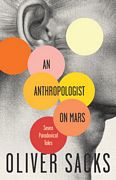
|
An Anthropologist on Mars. Oliver Sacks, $22.00
To these seven narratives of neurological disorder Dr.
Sacks brings the same humanity, poetic observation, and infectious sense of
wonder that are apparent in his bestsellers Awakenings and The Man
Who Mistook His Wife for a Hat. These men, women, and one extraordinary
child emerge as brilliantly adaptive personalities, whose conditions have not
so much debilitated them as ushered them into another reality. |
|
The Boy Who Could Run But Not Walk: Understanding
Neuroplasticity in the Child's Brain. Karen Pape, $34.00 
This extraordinary book reveals the power of unconscious
assumptions in medicine and science. For example, a boy with cerebral palsy
affecting one side of his body had learned to walk badly with poor balance, but
he was also able to run and play in a competitive junior soccer league. Dr.
Pape explains that we walk and run with the same parts of the brain. This means
that if the run is normal, then the brain has recovered. The explanation is
simple. He learned to walk with a damaged, immature brain. He learned to play
soccer with a recovered, more mature brain. Doctors are trained to look at the
abnormal walk, not more competent, later learned skills. This book offers
readers a new understanding of how the baby brain grows and recovers
differently than an adult brain.
Throughout this remarkable book Dr. Pape shows that
cerebral palsy is not an incurable condition. The movement disorders are a
physical habit that can be changed, with a lot of hard work. The stories of
children’s recovery and improvements found within these pages are a
revelation — surprising, inspiring, and illuminating, offering real hope for some
of the world’s most vulnerable children. With profound implications for the
nearly 17 million children and adults worldwide living with cerebral palsy, The
Boy Who Could Run But Not Walk challenges the outdated thinking that there
is no cure for cerebral palsy. |
Back to top
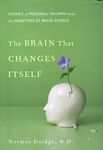
|
The Brain That
Changes Itself: Stories of Personal Triumph from the Frontiers of
Brain Science. Norman Doidge, $24.00
Psychiatrist and psychoanalyst Norman Doidge traveled the country
to meet both the brilliant scientists championing neuroplasticity
and the people whose lives they’ve transformed — people whose mental
limitations or brain damage were seen as unalterable... Using these
marvelous stories to probe mysteries of the body, emotion, love,
sex, culture, and education, Dr. Doidge has written an immensely
moving, inspiring book that will permanently alter the way we look
at our brains, human nature, and human potential.
|
|
The Brain's Way of
Healing: Remarkable Discoveries and Recoveries from the Frontiers of
Neuroplasticity. Norman Doidge, $24.00
In The Brain That Changes Itself, Norman
Doidge described the most important breakthrough in our understanding of the
brain in four hundred years: the discovery that the brain can change its own
structure and function in response to mental experience — what we call
neuroplasticity.
His revolutionary new book shows, for the first time, how the amazing process
of neuroplastic healing really works. It describes natural, non-invasive
avenues into the brain provided by the forms of energy around us — light, sound,
vibration, movement — which pass through our senses and our bodies to awaken the
brain’s own healing capacities without producing unpleasant side effects.
Doidge explores cases where patients alleviated years of chronic pain or
recovered from debilitating strokes or accidents; children on the autistic
spectrum or with learning disorders normalizing; symptoms of multiple sclerosis,
Parkinson’s disease, and cerebral palsy radically improved, and other
near-miracle recoveries. And we learn how to vastly reduce the risk of dementia
with simple approaches anyone can use.
For centuries it was believed that the brain’s complexity prevented recovery
from damage or disease. The Brain’s Way of Healing shows that
this very sophistication is the source of a unique kind of healing. As he did
so lucidly in The Brain That Changes Itself, Doidge uses stories to
present cutting-edge science with practical real-world applications, and
principles that everyone can apply to improve their brain’s performance and
health. |
|
|
Brainlash: Maximize Your Recovery from Mild Brain
Injury. Gail Denton, $34.95
Mild traumatic brain injury can happen to anyone, anytime
in cars, sports, or workplace accidents, falls, or through physical assault,
including domestic violence and shaken-baby syndrome. The National Center for
Injury Prevention and Control estimates that 1.4 million Americans sustain a
traumatic brain injury (TBI) each year, and that at least 5.3 million Americans
currently have long-term or lifelong need for help to perform activities of
daily living as a result of a TBI.
Brainlash provides the tools and facts to make the
recovery process more intelligible — and to support the wide range of people affected
by MTBI. For patients, family members, physicians and other health care
providers, attorneys, health insurance companies, employers and others, it
covers options and services, health and vocational issues, medicolegal topics,
psychological and emotional implications, and more! |
Back to top
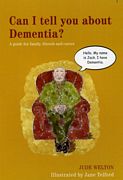
|
Can I Tell You about Dementia? A
Guide for Family, Friends, and Carers. Jude Welton,
$13.95
Meet Jack — an older man with dementia.
Jack invites readers to learn about dementia from his perspective, helping them
to understand the challenges faced by someone with dementia and the changes it
causes to memory, communication and behaviour. He also gives advice on how to
help someone with dementia stay as mentally and physically active as possible,
keep safe and continue to feel cared for and valued.
With illustrations throughout, this
useful book will be an ideal introduction to dementia for anyone from child to
adult. It will also guide family, friends and carers in understanding and
explaining the condition and could serve as an excellent starting point for
family and classroom discussions. |
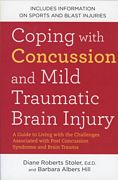
|
Coping with Concussion and Mild
Traumatic Brain Injury: a Guide to Living with the Challenges Associated with
Post Concussion Syndrome and Brain Trauma. Diane Roberts
Stoler & Barbara Albers Hill, $19.00
Often presenting itself after a head
trauma, concussion — or mild traumatic brain injury (mTBI) — can cause chronic
migraines, depression, memory, and sleep problems that can last for years,
referred to as post concussion syndrome (PCS). A comprehensive guide for
improving memory, focus, and quality of life in the aftermath of a concussion, COPING
WITH CONCUSSION AND MILD TRAUMATIC BRAIN INJURY is a lifeline for
patients, parents, and other caregivers. |
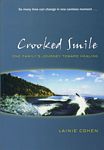
|
Crooked
Smile: One Family’s Journey Toward Healing. Lainie Cohen,
$19.95 
A mother struggles to keep her family together after her eldest
son suffers a brain injury in a car crash. Within months, her youngest
son becomes involved with drugs and his sister suffers a physical
collapse that puts her in a wheelchair. A moving and inspiring memoir
written with emotional honesty, filled with hope and celebration
for life's small successes.
Lainie Cohen lives in Toronto and has been published in the Globe
and Mail, The Canadian Jewish News, and Parchment. All proceeds
from the sale of Crooked Smile will go to the Bloorview
MacMillan Children's Foundation.
|
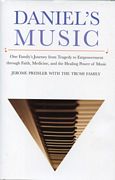
|
Daniel’s Music: One Family’s Journey from Tragedy
to Empowerment through Faith, Medicine, and the Healing Power of Music. Jerome Preisler, with the Trush Family, $38.95
In 1997, Daniel Trush, a bright, active,
outgoing twelve-year-old, collapsed on the basketball court and fell into a
deep coma. Rushed to the hospital, he was found to have five previously
undetected aneurysms in his brain. One had burst, causing a massive cerebral
hemorrhage. While Daniel remained comatose, the uncontrolled pressure inside
his skull caused him to suffer multiple strokes. Tests showed that his brain
functions had flat-lined, and doctors would soon tell his parents his chances
of survival were slim to none—or that he’d likely remain in a vegetative state
if he awakened.
But the doctors were wrong.
Thirty days after lapsing into a coma, he would return to consciousness, barely
able to blink or smile. Two years later, he took his first extraordinary steps
out of a wheelchair. A decade after being sped to the emergency room, Daniel
Trush completed the New York Marathon. DANIEL’S MUSIC is the gripping
story of Daniel’s recovery against odds experts said were insurmountable; and
of an average family turning their personal trials into a force that brings
joy, inspiration, and a powerful sense of belonging to all those whose lives
they touch. |
Back to top
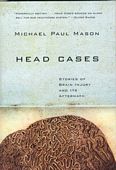
|
Head Cases:
Stories of Brain Injury and Its Aftermath. Michael Paul
Mason, $18.50
Head Cases takes us into the dark side of the brain in
an astonishing sequence of stories, at once true and strange, from
the world of brain damage. Michael Paul Mason is one of an elite
group of experts who coordinate care in the complicated aftermath
of tragic injuries that can last a lifetime. On the road with Mason,
we encounter survivors of brain injuries as they struggle to map
and make sense of the new worlds they inhabit.
Underlying each of these survivors’ stories is an exploration
of the brain and its mysteries. Mason gives us a series of vivid
glimpses into brain science, the last frontier of medicine, and
we come away in awe of the miracles of the brain’s workings
and astonished at the fragility of the brain and the sense of self,
life, and order that resides there. |
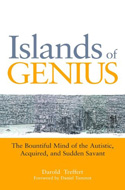
|
Islands of Genius: the Bountiful Mind of the Autistic, Acquired and Sudden Savant. Darold Treffert, $39.95
Savant syndrome is a rare condition in which individuals with developmental disorders, including autism spectrum disorders, have one or more areas of expertise, ability, or brilliance — "islands of genius" — that exist in contrast with their overall limitations. In this fascinating book, Dr. Darold Treffert looks at what we know about this remarkable condition, and at new discoveries that raise interesting questions about the hidden brain potential within us all.
Dr. Treffert explores the phenomena of genetic memory — instances in which individuals somehow "know" things they never learned; and sudden genius or "acquired savantism" — where a neuro-typical person unexpectedly and spectacularly develops savant-like abilities following a head injury or stroke. Showing that these phenomena point convincingly towards a reservoir of untapped potential — an inner savant capacity — within us all, he looks both at how savant skills can be nurtured, and how they can help the person who has them, particularly if that person is on the autism spectrum. A central colour section contains the extraordinary artwork of some of the savants who are mentioned in the book.
Islands of Genius will intrigue anyone who has ever wondered what makes the mind of a savant tick, as well as clinicians, parents, teachers, therapists, and others who care for and about, individuals with savant syndrome. |

|
The Man Who Mistook His Wife for a Hat. Oliver
Sacks, $18.99
Here Dr. Sacks recounts the case histories of patients
lost in the bizarre, apparently inescapable world of neurological disorders. If
inconceivably strange, these brilliant tales remain, in Dr. Sacks’s splendid
and sympathetic telling, deeply human. They are studies of life struggling
against incredible adversity, and they enable us to enter the world of the
neurologically impaired, to imagine with our hearts what it must be to live and
feel as they do. |
Back to top
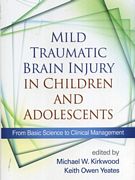
|
Mild Traumatic Brain Injury in
Children and Adolescents: From Basic Science to Clinical Management. Michael Kirkwood & Keith Owen Yeates, Editors, $88.50
A cutting-edge synthesis of science
and practice, this book covers everything from sports-related concussions to
less common types of mild traumatic brain injury (mTBI) and related
complications. Preeminent authorities review what is known about mTBI in
childhood and adolescence—including its biomechanics, pathophysiology, and
neurological and neurobehavioral outcomes—and showcase evidence-based clinical
evaluation tools and management strategies. Challenging areas such as
evaluating complicated mTBI and treating persistent problems after injury are
discussed in detail. Also addressed are forensic issues, injury in very early
childhood, and other special-interest topics. |
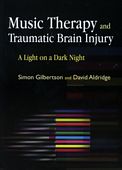
|
Music Therapy and Traumatic
Brain Injury: a Light on a Dark Night. Simon Gilbertson &
David Aldridge, $40.95
Music Therapy and Traumatic Brain Injury demonstrates how
music therapy can be used to attend to the holistic, rather than
purely functional, needs of people affected by severe head trauma.
Divided into three parts, the first section provides an introduction
to the effects brain injury has on a person's livelihood. The second
is a comprehensive review of available literature on the use of
music therapy in the neurorehabilitative setting. The final section
examines three case studies designed according to 'therapeutic
narrative analysis', an adaptive research method that uses interviewing
and video, which focuses on the unique relationship between the
professional and the patient.
This book will give clinicians key notes for practice and a vision
of the integral role music therapy can have in the successful rehabilitation
from brain injury. |
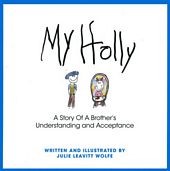
|
My Holly: a Story of a Brother’s Understanding and
Acceptance. Julie Leavitt Wolfe, $22.95
This is a story about a young boy named Jack, and the
feelings he’s had about his little sister who has special needs due to an
infant stroke. Jack sometimes feels sad because he wants his mom and dad to
play with him, but they are busy taking Holly to therapy or doctor’s
appointments. Jack begins to understand that his parents also try to make sure
he knows he’s important and loved, and begins to believe, just like his mom,
that one day Holly will be able to do anything she wants! |
Back to top
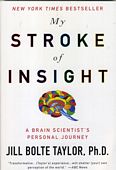
|
My Stroke
of Insight: a Brain Scientist’s Personal Journey. Jill
Bolte Taylor, $22.00
On December 10, 1996, Jill Bolte Taylor,
a 37 year old Harvard-trained neuroscientist, experienced a
massive stroke in the left hemisphere of her brain. Over the
next four hours, Dr. Bolte Taylor observed her mind deteriorate
to the point that she could not walk, talk, read or recall
her life. It would take her eight years to recover.
My Stroke of Insight is a unique
and inspiring tale that brings personal experience together with
professional understanding. This is a valuable recovery guide
for those touched by brain injury and trauma. |
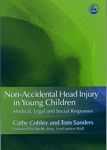
|
Non-Accidental Head Injury in Young Children: Medical,
Legal and Social Responses. Cathy Cobley & Tom Sanders,
$39.95
Non-accidental head injury is often referred
to as being synonymous with 'shaken baby syndrome' (SBS) – a term
which has attracted a great deal of controversy in recent years
due to both disagreement about its cause and the reliability of
eyewitness testimony. The authors investigate the existing evidence
surrounding SBS and its recognition and construction, including
medical versus social explanations and the difficulties involved
in proving abuse. The authors argue for an examination of non-accidental
head injury rather than SBS, as this term encompasses other forms
of abuse as well as shaking, and caution against a blind acceptance
of medical testimony, arguing that this may impede child protection
agencies' ability to assess cases objectively and accurately. They
also consider the effectiveness of prevention strategies in reducing
the incidence of child abuse cases.
This insightful book will be essential reading for social workers,
lawyers, health professionals, and those working with child protection
agencies. |
|
|
Practically Speaking: Language, Literacy, and Academic
Development for Students with AAC Needs. Edited by Gloria Soto & Carole
Zangari, $45.95
When K-12 students use augmentative and alternative
communication (AAC), what can SLPs and educators do to ensure the best academic
and social outcomes? They'll find out in this accessible guidebook — every
professional's key to helping students develop the language and literacy skills
that lead to higher academic achievement and positive peer relationships. |
Back to top
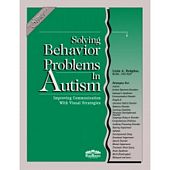
|
Solving Behavior Problems
in Autism: Improving Communication with Visual Strategies. Linda
Hodgdon, $60.95
Communication and behavior are
intertwined. Using visual strategies to improve communication can significantly
improve behavior situations. This book is packed with lots of samples and
examples of visual tools that have worked for students with autism spectrum disorders
and others with moderate to severe communication or behavior challenges —
including aphasia, brain injury, processing disorders and more. |

|
Struck by Genius: How a Brain Injury Made Me a
Mathematical Marvel. Jason Padgett with Maureen Seaberg, $29.99
No one sees the world the way Jason Padgett does. Water
pours from the faucet in crystalline patterns, each number has a distinct geometric
shape, and fractal patterns emerge from the movement of tree branches and the
swirl of cream in his coffee, revealing the mathematical patterns hidden in the
objects around us. The amazing thing is that Jason wasn’t born this way. Twelve
years ago, he was an ordinary guy, a jock who loved to party and had never made
it past pre-algebra in high school. One night, a vicious blow to the head in an
altercation profoundly and permanently altered the way his brain works. Jason
would eventually learn his injury had made him an acquired savant and
synesthete, someone whose blended sense perception causes such strange effects
as the ability to taste shapes, hear colours and see numbers as geometric
objects. Suddenly, Jason saw the world in a completely different way. As the
first documented case of acquired savant syndrome with his particular type of
mathematical synesthesia, Padgett is a medical marvel.
Struck by Genius recounts how Padgett
overcame enormous setbacks and embraced his transformed mind. Along the way he
found love, discovered joy in numbers and spent plenty of time having his head
examined. His fascinating and inspiring story of the abilities that potentially
lie hidden within us all reveals how much we still have to learn about the
wondrous potential of the human brain. |
|
|
Traumatic Brain Injury in Children and Adolescents:
Assessment and Intervention. Margaret Semrud-Clikeman, $60.50
The return to school following traumatic brain injury
(TBI) is fraught with challenges for children and adolescents, their families,
and school professionals. This volume provides the practical knowledge needed
to understand the neuropsychological problems associated with TBI and
facilitate students' reintegration into the regular or special education
classroom. Research-based strategies are presented for assessing and
accommodating each student's needs, with suggestions for testing that can be
completed by practitioners without extensive neuropsychological training.
Featuring numerous illustrative clinical examples, the book also includes an
extended case history that brings to life the entire process of recovery from
TBI.
Reviewing basic neuroanatomy, the book first discusses
the functional problems and areas of learning difficulty that typically arise
from different types of injury. It explores the associated emotional challenges
and issues facing families, emphasizing the importance of working closely with
parents and building effective home-school partnerships. Identified and briefly
described are over 30 psychological measures that can be used to evaluate
cognitive and academic skills; memory and learning; attention; executive and
reasoning skills; visual-motor and perceptual skills; and psychosocial,
emotional, and behavioral functioning. Detailed sample assessments are provided
for two students with injuries of varying severity, showing how test results
and other information can be integrated into a useful comprehensive report.
Guidelines are then presented for managing school reentry and conducting
team-based planning and decision making. General programming considerations are
discussed, as are specific interventions that incorporate knowledge from the
fields of ADHD, learning disabilities, and adult rehabilitation.
Written in a clear, non-technical style, this book is an
essential resource for school psychologists, counselors, and social workers;
special education professionals; and other clinicians working with young
people. It will also serve as a text in graduate-level neuropsychological
assessment courses. |
Back to top
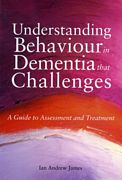
|
Understanding Behaviour in Dementia
that Challenges: a Guide to Assessment and Treatment. Ian Andrew James, $29.95
Behaviours that challenge can
significantly interfere with the quality of life of a person with dementia, as
well as that of those who live with and care for them. Yet there is a great
deal of confusion surrounding how such behaviours should be addressed. This
book provides theory and practical guidance on the assessment and treatment of
behaviours that challenge in dementia. The author describes the different
categories and causes of challenging behaviour, and provides tried-and-tested
models which will aid identification, assessment and treatment. A thorough
evaluation of the use of psychotropic medication is provided, as well as of a
wide range of psychological and biopsychosocial interventions.
This will be an invaluable resource for
any professional involved in the assessment and treatment of behaviours that
challenge in people with dementia, including psychiatrists, psychologists,
community psychiatric nurses, GPs and occupational therapists. It will also be
of interest to those involved in commissioning, providing and managing
services. |
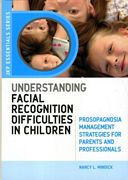
|
Understanding Facial Recognition Difficulties in Children: Prosopagnosia Management Strategies for Parents and Professionals. Nancy Mindick, $22.95
Can you imagine not being able to recognize those you know if they wore glasses, changed their hairstyle, or perhaps put on a hat? Prosopagnosia is a severe facial recognition disorder that is thought to impact around two per cent of the population. Frequently found in children on the autism spectrum, those with the condition have difficulties distinguishing between one face and the next, meaning that they may not recognize even those who are closest to them.
Nancy Mindick provides parents, teachers, and other professionals with an accessible explanation of the different types, causes, and characteristics of prosopagnosia. Providing an insider's perspective on the condition, she suggests ways to recognize the signs of facial recognition difficulties in children, and offers specific ideas for ensuring that they are properly supported in their learning and social development. The issues of diagnosis and disclosure are explored, and the author offers practical management strategies for helping children to cope with the condition and to navigate the many different social situations they will encounter at home, at school, and in the community.
This book offers specific, practical information for parents, teachers, child psychologists, and anyone else who wishes to support the learning and development of a child with a facial recognition disorder. |
Back to top

|
Visual Impairment in Children Due to
Damage to the Brain. Gordon Dutton & Martin
Bax, Editors, $170.00
The increased awareness of cerebral visual
impairment in children, combined with improved recognition of its wide ranging
manifestations, has led to its recognition as the most common cause of visual
impairment in children in the developed world.
This ambitious book links the work of
authors from many of the major research teams in this field, who have made
significant contributions to the literature on the subject of cerebral visual
impairment and provide a structured amalgam of the viewpoints of different
specialists. The book will be of great practical value to those who care
for children with visual impairment due to brain injury. |
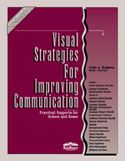
|
Visual Strategies for Improving
Communication: Practical Supports for School and Home, 2nd Edition. Linda Hodgdon, $60.95
This revised and updated edition of this
bestseller is the most comprehensive book to explain the use of visual
strategies to improve communication for students who experience moderate to
severe communication challenges. It is full of easy-to-use techniques and
strategies that will help these students participate more effectively in social
interactions and life routines. |
Back to top
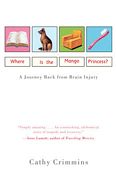
|
Where is the Mango Princess? A Journey Back from Brain
Injury. Cathy Crimmins, $18.95
Humorist Cathy Crimmins has written a deeply personal,
wrenching, and often hilarious account of the effects of traumatic brain
injury, not only on the victim, in this case her husband, but on the family.
When her husband Alan is injured in a speedboat accident,
Cathy Crimmins reluctantly assumes the role of caregiver and learns to cope
with the person he has become. No longer the man who loved obscure Japanese
cinema and wry humor, Crimmins’ husband has emerged from the accident a
childlike and unpredictable replica of his former self with a short attention
span and a penchant for inane cartoons. Where Is the Mango Princess? is
a breathtaking account that explores the very nature of personality — and the
complexities of the heart. |
|
Working with Traumatic Brain Injury in Schools: Transition,
Assessment, and Intervention. Paul Jantz, Susan Davies & Erin
Bigler, $79.00
Every day, children and adolescents worldwide return to
the educational setting having sustained a traumatic brain injury (TBI). The
possible negative consequences of TBI range from mild to severe and include
neurological, cognitive, emotional, social, and behavioral difficulties. Within
the school setting, the negative effects of TBI tend to persist or worsen over
time, often resulting in academic and social difficulties that require formal
and informal educational assistance and support. School psychologists and other
educational professionals are well-positioned to help ensure students with TBI
receive this assistance and support.
WORKING WITH TRAUMATIC BRAIN INJURY IN SCHOOLS is a
comprehensive practitioner-oriented guide to effective school-based services
for students who have experienced a TBI. It is primarily written for
school-based professionals who have limited or no neurological or
neuropsychological training; however, it contains educational information that
is useful to professionals with extensive knowledge in neurology and/or
neuropsychology. This book is also written for parents and guardians of
students with TBI because of their integral role in the transition,
school-based assessment, and school-based intervention processes |
Back to top
Complete
Booklist
Ahead of the Game: the Parents’ Guide to Youth Sports
Concussion. Rosemarie Scolaro Moser, $17.00
An Anthropologist on Mars. Oliver Sacks, $22.00
The Boy Who Could Run But Not Walk: Understanding
Neuroplasticity in the Child's Brain. Karen Pape, $34.00
The Brain That Changes Itself: Stories of Personal
Triumph from the Frontiers of Brain Science. Norman Doidge, $24.00
The Brain's Way of Healing: Remarkable Discoveries and
Recoveries from the Frontiers of Neuroplasticity. Norman Doidge, $24.00
Brainlash: Maximize Your Recovery from Mild Brain Injury.
Gail Denton, $34.95
Can I Tell You about Dementia? A Guide for Family,
Friends, and Carers. Jude Welton, $13.95
Coping with Concussion and Mild Traumatic Brain Injury: a
Guide to Living with the Challenges Associated with Post Concussion Syndrome
and Brain Trauma. Diane Roberts Stoler & Barbara Albers Hill, $19.00
Crooked Smile: One Family's Journey Toward Healing.
Lainie Cohen, $19.95
Daniel’s Music: One Family’s Journey from Tragedy to
Empowerment through Faith, Medicine, and the Healing Power of Music. Jerome
Preisler, with the Trush Family, $38.95
Head Cases: Stories of Brain Injury and Its Aftermath.
Michael Paul Mason, $18.50
Islands of Genius: the Bountiful Mind of the Autistic,
Acquired and Sudden Savant. Darold Treffert, $39.95
The Man Who Mistook His Wife for a Hat. Oliver Sacks, $18.99
Mild Traumatic Brain Injury in Children and Adolescents:
From Basic Science to Clinical Management. Michael Kirkwood & Keith Owen
Yeates, Editors, $88.50
Music Therapy and Traumatic Brain Injury: a Light on a
Dark Night. Simon Gilbertson & David Aldridge, $40.95
Back to top
My Holly: a Story of a Brother’s Understanding and
Acceptance. Julie Leavitt Wolfe, $22.95
My Stroke of Insight: a Brain Scientist's Personal
Journey. Jill Bolte Taylor, $22.00
Non-Accidental Head Injury in Young Children: Medical,
Legal and Social Responses. Cathy Cobley & Tom Sanders, $39.95
Practically Speaking: Language, Literacy, and Academic
Development for Students with AAC Needs. Edited by Gloria Soto & Carole
Zangari, $45.95
Solving Behavior Problems in Autism. Linda Hodgdon,
$60.95 (includes strategies for aphasia, brain injury, processing disorders and
more)
Struck by Genius: How a Brain Injury Made Me a
Mathematical Marvel. Jason Padgett with Maureen Seaberg, $29.99
Traumatic Brain Injury in Children and Adolescents:
Assessment and Intervention. Margaret Semrud-Clikeman, $60.50
Understanding Behaviour in Dementia that Challenges: a
Guide to Assessment and Treatment. Ian Andrew James, $29.95
Understanding Facial Recognition Difficulties in
Children: Prosopagnosia Management Strategies for Parents and Professionals.
Nancy Mindick, $22.95
Visual Impairment in Children Due to Damage to the Brain.
Gordon Dutton & Martin Bax, Editors, $170.00
Visual Strategies for Improving Communication: Practical
Supports for School and Home, 2nd Edition. Linda Hodgdon, $60.95
Where is the Mango Princess? A Journey Back from Brain
Injury. Cathy Crimmins, $18.95
Working with Traumatic Brain Injury in Schools:
Transition, Assessment, and Intervention. Paul Jantz, Susan Davies & Erin
Bigler, $79.00
Back to top

Didn't
find it...?
Not sure...?
Need a suggestion...?
There are over 10,000 titles listed on our website and more than 35,000 titles in our inventory. If you haven't found what you want on the website — and it's one of our specialties — chances are good that we carry it, or can get it for you. Just let us know what you're looking for.
Call us toll-free 1-800-209-9182
or e-mail
PARENTBOOKS
is pleased to invoice institutions. Please inquire regarding terms and
discounts. Shop in person, by phone, fax, mail or e-mail . VISA, Mastercard
and Interac are welcome. We are open from 10:30 to 6:00 Monday through Friday and from 11:00 to 5:00 on Saturday.
 All prices are in Canadian dollars
and are subject to change without notice. All prices are in Canadian dollars
and are subject to change without notice.

|